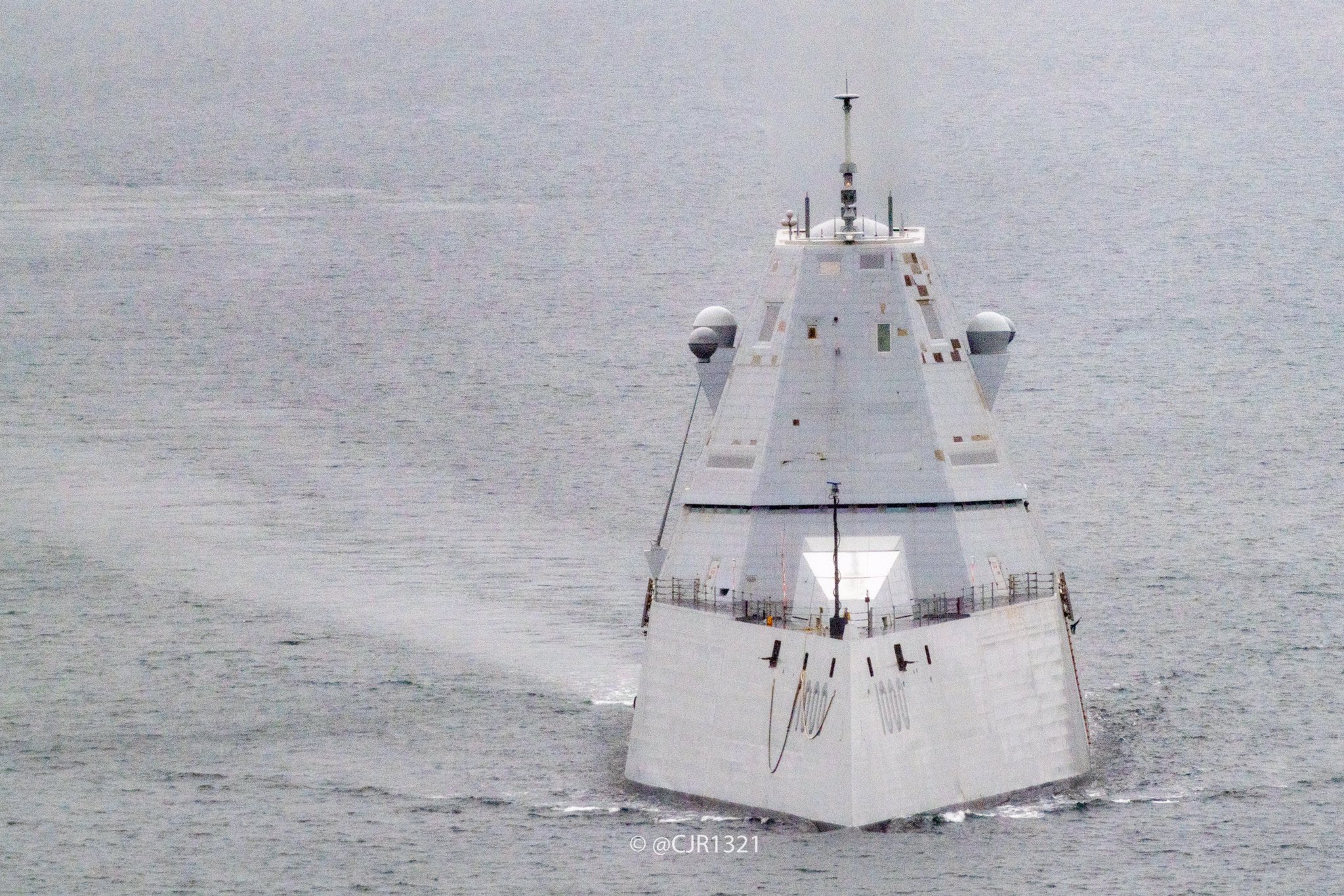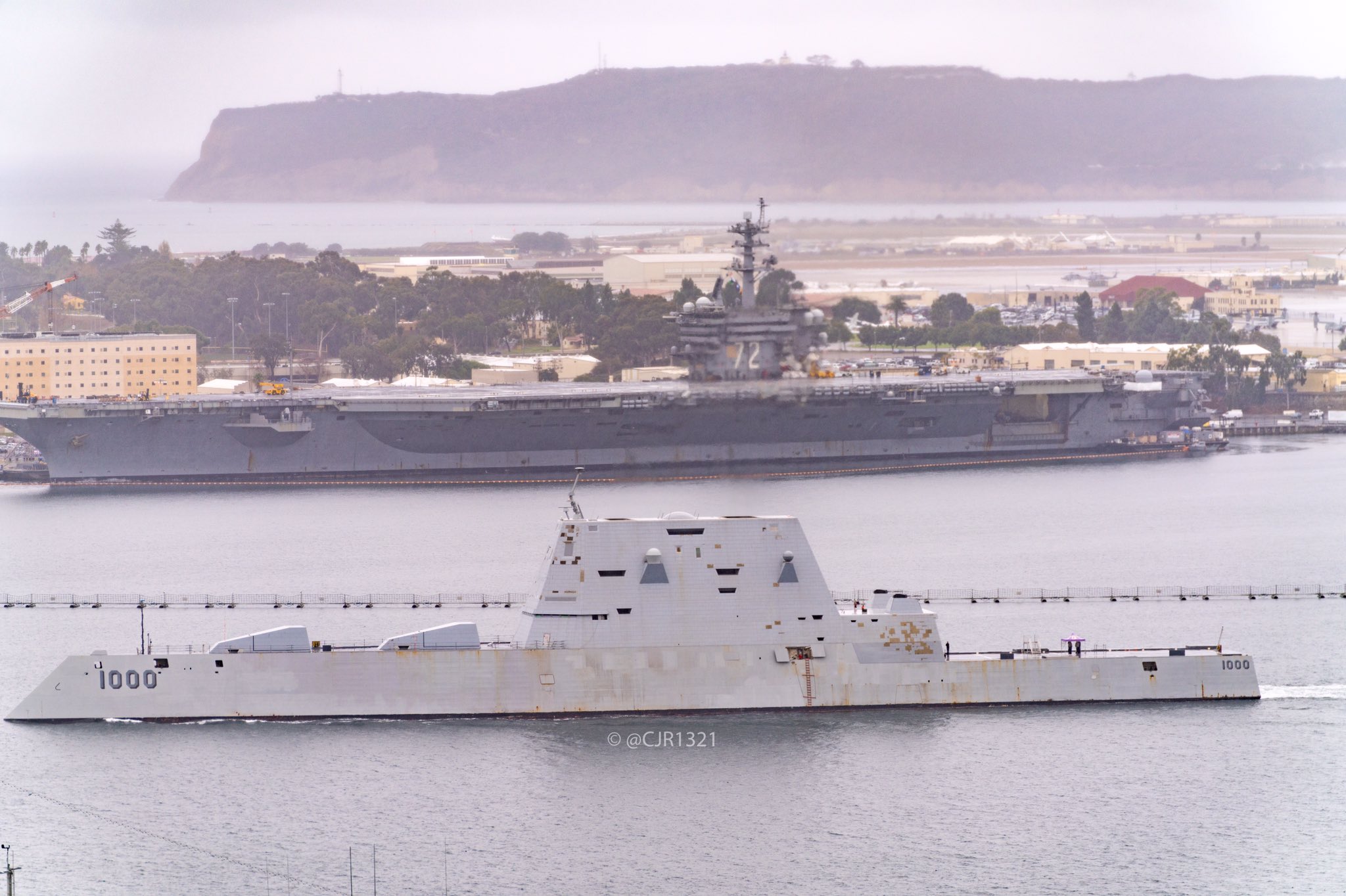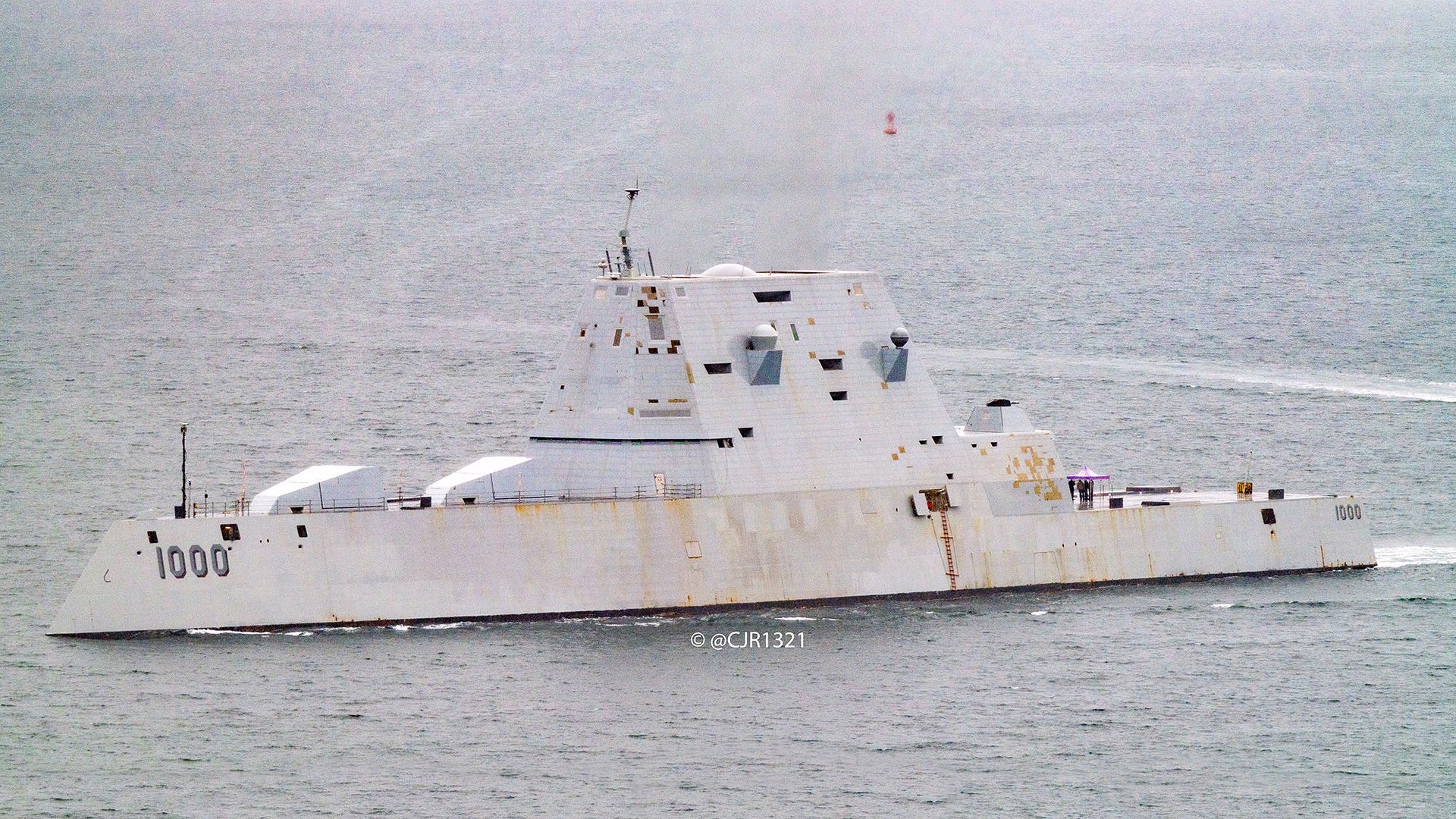The Navy’s first of just three DDG-1000 destroyers, USS Zumwalt, continues its testing and training work off Southern California. The ship, which was commissioned five years ago, has been coming and going from San Diego Bay regularly for years now. The second ship in this small class of highly advanced warships, USS Michael Mansoor (DDG-1001), has also joined Zumwalt in San Diego for its own outfitting and trials. It is hoped that Zumwalt will be able to deploy in the not-so-distant future, but the futuristic warship looked less than gleaming recently, with some of its radar-absorbent tiles deeply discolored and rust streaking down its convex tumblehome hull.
Images taken by @CRJ1321 that were posted by our friend @Warshipcam show the ship looking unlike its usually relatively pristine self:



The rusty look of the Navy’s super destroyer caught a ton of attention on social media, with various defense commentators posting strong opinions about the look of the ship and the Navy’s ‘running rust’ practices. Here is a sample:
This is a well-established issue that is getting worse, not better, but usually, it is found on ships that have been deployed for long periods of time, executing high tempo operations, not those that spend the vast majority of their time tied up to the pier at one of the Navy’s most well-equipped harbors. The ‘running rust’ issue is quite contentious, with some who say as long as the ship functions, it shouldn’t be a major issue, while others claim it is a major embarrassment and indicative of troubling systemic issues within the Navy.
One excuse for the ship looking like this could be that it was designed around a minimal manning concept. What this means is that even though DDG-1000 is far larger displacement-wise than an Arleigh Burke class destroyer, its crew complement is just over half the size, at around 175 people, and that is when it is fully staffed for combat operations. While automation can help reduce the need for some tasks, corrosion control is still very much a job that’s done with sweat and elbow grease and the DDG-1000s have a lot of surface area to keep up. Zumwalt class crews also have to deal with low-observable coatings on areas of the ship that are less straightforward to maintain than normal surface corrosion found of other ships in the fleet. That being said, Zumwalt and Michael Monsoor were built with composite deckhouses that are supposed to lessen corrosion. Their sister ship, USS Lyndon B. Johnson (DDG-1002), has a deckhouse made of steel.
As for when Zumwalt will be fully ready for action remains unclear, although it should be reaching initial operational capability anytime now. The Government Accountability Office (GAO) stated the following in its most recent annual assessment of major US military acquisition programs:
As of September 2020, the Navy plans to request $169 million to install its four new systems on at least one or more DDG 1000 ships and would need to request further funding to complete the remaining ships’ systems. Though the Navy plans to fully mature these technologies by ship integration, the integration will not occur until several years after the Navy plans to achieve initial operational capability in December 2021. As a result, the DDG 1000 class ships will remain incomplete and incapable of performing their planned mission until at least 2025.
We have reached out to the Navy to get their take on the Zunwalt’s current condition, but for a ship that has been hugely expensive and immensely controversial, running around looking like this is bound to result in unfortunate optics. That is unfortunate because it could eclipse some awesome accomplishments that could be occurring as the ship moves towards some type of initial deployment.
UPDATE:
Here is the Navy’s response to our inquiry:
USS Zumwalt (DDG 1000) returned to homeport Thursday, Dec. 9, after the completion of advanced degaussing testing. For the Surface Force, preservation is a constant battle against corrosion. The harsh environment in which we operate degrades our ships, and our Sailors work hard to address corrosion along with all the maintenance and crew training required to sustain our Navy’s warfighting readiness.
Nicole Schwegman, spokesperson, Commander, Naval Surface Forces, U.S. Pacific Fleet
Contact the editor: Tyler@thedrive.com

